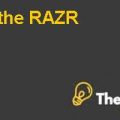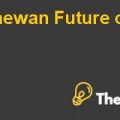
Issues and Objectives
The vice-president of Human Resource of Blue-Mountain Resort (BMR) Dave Sinclair, was in search of options in improving the service quality program. Dave has few options available in front of him presented by a team made to identify the opportunities available for BMR. The team consisted of 25 managers from different departments of BMR, who presented Dave with certain options of improvement. These options are needed to be analyze critically in order to select the right proposal from the options like customer flow, information technology and speed of services. The resort was offering a variety of services, but with the passage of time the company expanded and it faced problems delivering the service quality. The company greatly attributed with the traits like poor service and a long line-up.
These issues were occurring only because the customers were not experiencing what they were expecting and turning out to give poor remarks. The morale of the employees was going down, and they were not delivering the quality services that was required and it was also hurting their job performance. The two dimensions of delivering quality service, empathy and responsiveness were unable to attain by the staff, which was becoming a growing concern for Dave. Dave now has to select among the proposals presented to him and to select which option needs more focus.
Analysis
In order to overcome the issue of poor performance and service quality and to improve employee performance and to build their morale, BMR consulted a firm Achieve. The firms started with the upper management and focused on building and vision and value for BMR and emphasized on building a corporate culture. An important aspect was the identification of the importance of service culture and its effects and benefits that can be attained through it in terms of customer, employees and organization. Using an external firm was a good approach as BMR was lacking in delivering sufficient knowledge to its employees about service quality management. Another key impact was that the company’s management was now driven towards creating a culture sound enough to provide quality service to its customers. With the help of this program, the top management becomes committed in creating a service quality culture.
Next in line was the formation of a committee under the leadership of Sinclair. Dave Sinclair went to learn Achiever’s international philosophy about quality service that provided him sufficient knowledge about the topic. This step was vital for Dave, as a leader he developed sufficient skills and gathered ample knowledge about quality service and developed a rough draft portraying two-year plan of BMR. This plan identified the key goals and methods and priorities of BMR aligned with the objectives BMR wanted to achieve through this program. The committee developed broad strategic goals for the company and established a new vision aiming to become the number one resort in Canada. In the year 1993-94 the company saw a declining trend in its call because the customers were unfamiliar of the location which restricted the company to increase its consumer base so BMR needed to identify the loopholes in its service quality and needed an adequate process and system.
In order to overcome this situation, the BMR formed cross-functional teams to ensure continuous improvement. This step was vital as employee involvement is important towards process improvement and to sustain improvement for a long period. The cross functional teams designed to focus on departments like call-center, signage, check-in and purchasing as these departments involved majority of customer involvement and improvement in these areas would be effective in improving service quality. Investment in call-centers and upgrading the telecommunication system was a vital decision as call-centers provide the first interaction with the customer and setting standards of improvement was a vital decision. Overall employee involvement was a decision towards a long term approach as employees are front-line runners, and they have a better understanding towards the issues and problems towards quality service. Giving employees the opportunities that would have raised their morale, and this will eventually impact their job performance.
Another major factor was the communication of the progress of the improvement program between the employees and the stakeholders. Issuing copies of the reports about the program and its progress and allowing employees and stakeholders to analyze that it was an important decision. This created communication between staff and management and helped them in identifying key issues and discussing them, to reach a mutual solution....................
This is just a sample partial case solution. Please place the order on the website to order your own originally done case solution.
Most Ontario ski resort faces a decision on whether to invest in facilities for night skiing. The demand is very uncertain, so the management is conducting a study of market research. Day skier on the subject of the respondents about their potential interest for a month in February and March. Management of the resort is suspicious about the validity of research results, but does not have time to collect more data. "Hide
by Terry H. Deutscher, Susan Burke Source: Richard Ivey School of Business Foundation 20 pages. Publication Date: January 1, 1983. Prod. #: 83A025-PDF-ENG













